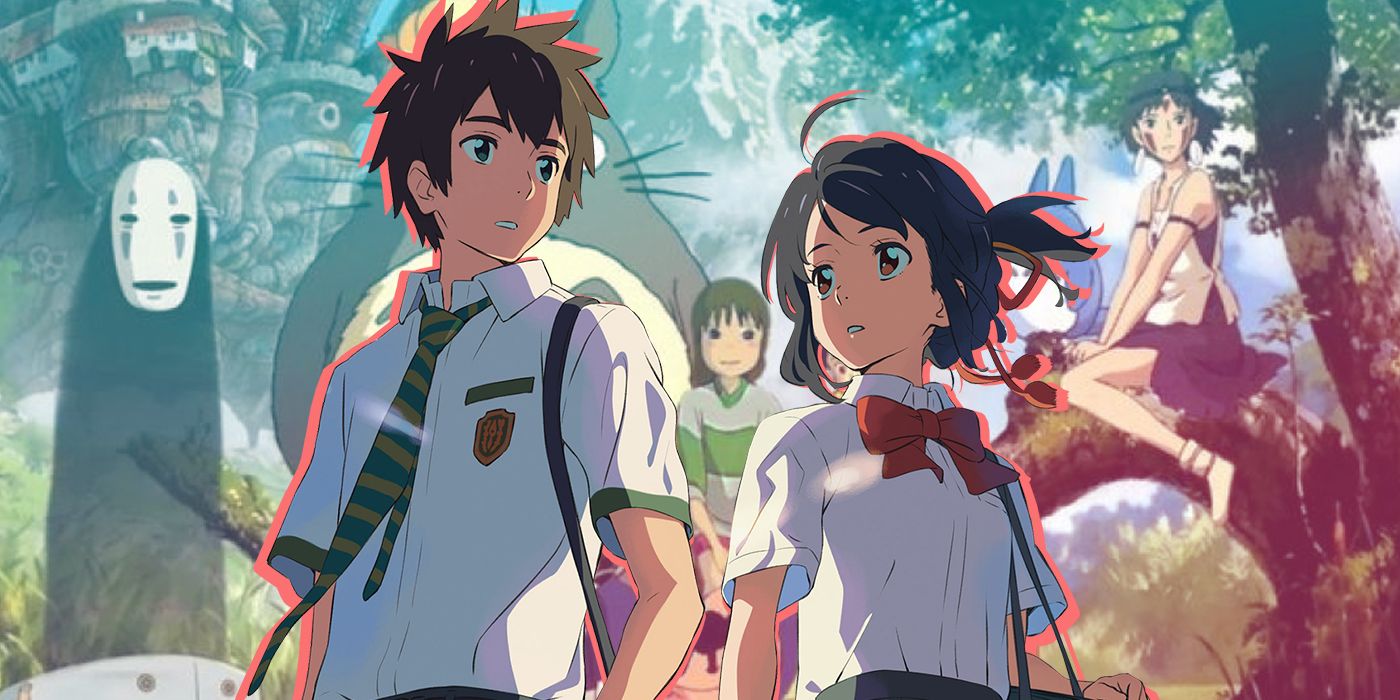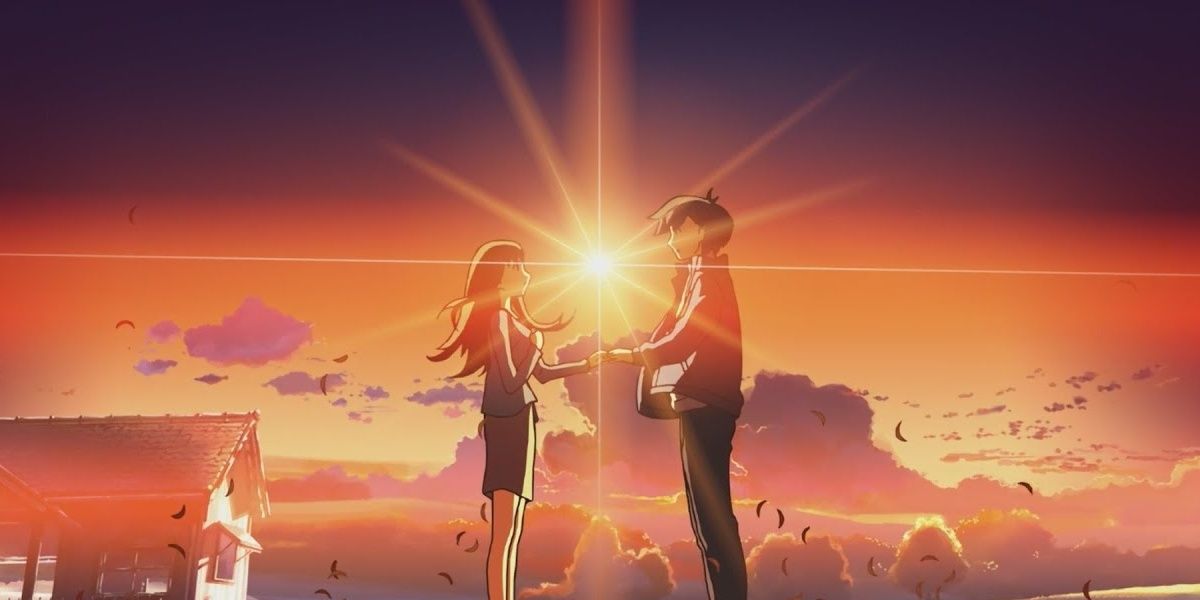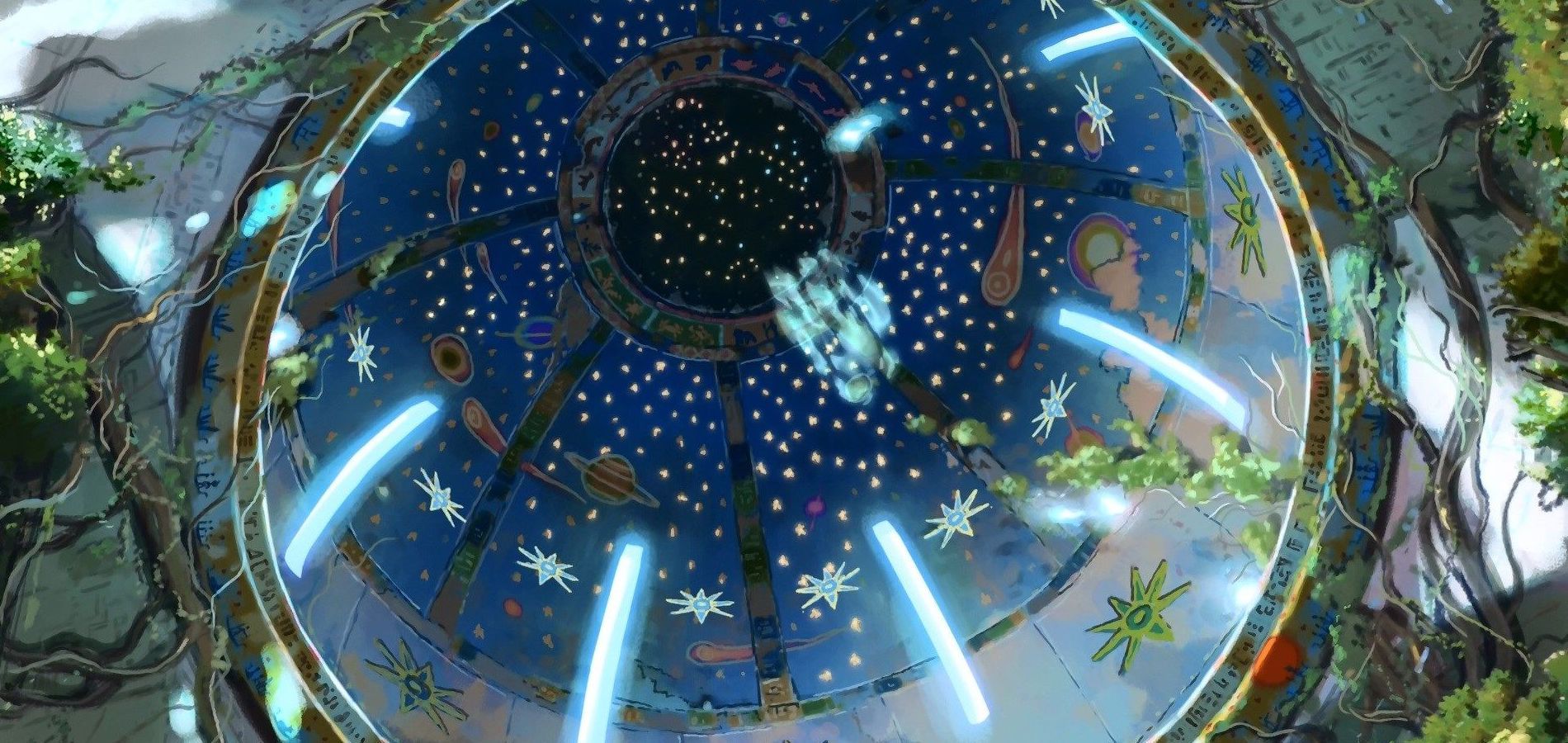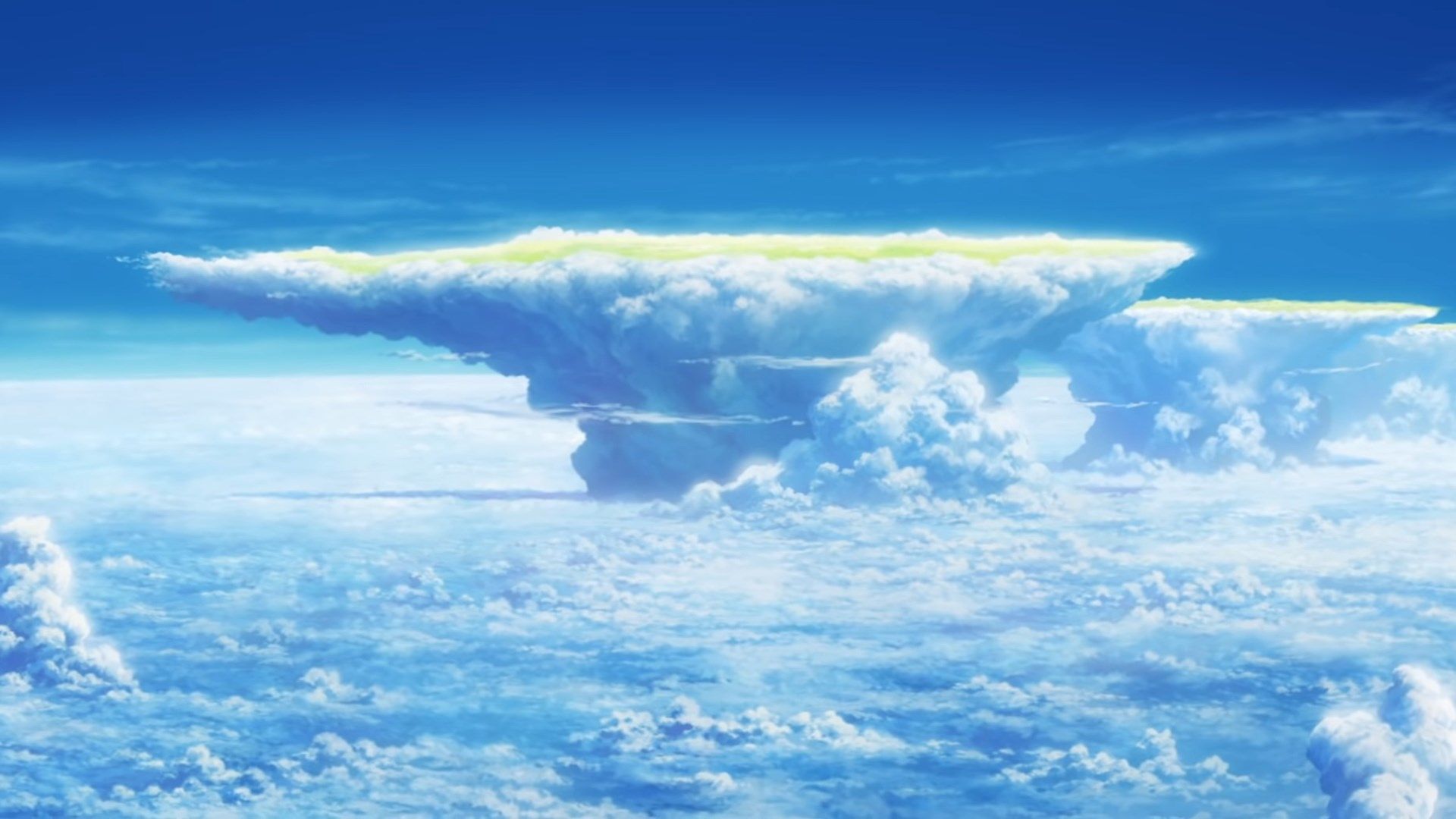Anime director Makoto Shinkai has been commonly referred to as the "New Miyazaki," despite Shinkai's dissenting view on the use of this term. Although Shinkai has enjoyed immense box office success worldwide, there can only be one Hayao Miyazaki. Upon analyzing their bodies of work for common themes and characterizations, it becomes apparent just how different these artists are in their worldview and style.
Shinkai achieved mainstream success with the 2016 boy-meets-girl fantasy epic Your Name. Its vivid imagery and blending of the surreal prompted some comparisons to the Studio Ghibli titan, and Miyazaki has influenced Shinkai, but Shinkai hopes to rightfully forge his own path. In an interview with The Guardian, Shinkai states that "You've got the create something different... But... I do want to trigger emotions like his films triggered our emotions."
On the surface, Shinkai and Miyazaki share three common traits in their films: a connection to nature, emotional depth and beautifully vivid imagery. Both animators' characters generally find solace in the natural world and use it as a vehicle to explore their soulful yearnings. The emotional depth of both artists' films is key to their success, as their protagonists struggle with weighty inner conflicts that make their stories all the more evocative.
Accentuating the importance of the natural world is the stunningly detailed and vivid animation both Shinkai and Miyazaki employ, but the methods they use differ. Shinkai entered animation through his work in the video game industry and has always worked with computer graphics in his animation, whereas Miyazaki is known for limiting the use of CGI in his films and hand-drawing almost every frame.
The two animators differ in their artistic goals since Miyazaki's films have a resounding call to action in them that seeks to inspire. For instance, Princess Mononoke delivers a nuanced message about the intricacies of humans coexisting with the environment, condemning extremists on both ends of the spectrum. Shinkai's films are notably much more personal, often focusing on the feelings of loss and loneliness in adolescence, striving to touch a single soul rather than that of society. Following these lines, Shinkai's work identifies with the youth because he captures the throes of fleeting emotions and brooding pensiveness. Miyazaki addresses the younger generation in a more paternalistic manner, depicting his young characters with wisdom beyond their years and the agency to change the world.
Shinkai's first feature, The Place Promised in Our Early Days, dazzlingly blends fantasy and reality with hyperrealistic settings. In an alternate history, the Soviet Union occupies half of Japan and is waging a mysterious war with a tower that is replacing matter of this universe with matter from other universes. Three childhood friends who have been separated reconnect years later to save the world from annihilation. Here, the motif of loss and disconnection in adolescence is born in Shinkai's work, marking a notable difference from Miyazaki's relationships, which are known to be platonic vessels for character growth. War is presented through a shiny science fiction lens, in contrast to the more historical and fantastical leanings of Miyazaki's many anti-war parables.
In Shinkai's most melancholy film, 5 Centimeters Per Second, two teens, Takaki and Akari, fall in love but are continually separated by their families moving. The story is an elegy of the way people drift apart through life and yet cling to the memory of the past. Imbued with so much reflection, Takaki and Akari's longing burns bright and lingers like the tail of a dying comet traversing the night sky. The film's ending, in which both Takaki and Akari are adults with the memory of love being a source of sorrow, is a stark difference from how most (though not all) relationships in Miyazaki films end on a more hopeful note. Shinkai prefers to dwell on the relationships that don't last but linger.
Shinkai's next film, Children Who Chase Lost Voices, is a female-led fantasy adventure that most closely resembles a Studio Ghibli film out of any of Shinkai's works. A young girl named Asuna gets caught up in a battle to protect the spirit realm of Agartha, where the Gate of Life and Death resides. Agartha is filled with terrifying beasts and brave warriors, much like in the Ghibli imagination. What's consistent with Shinkai's general artistic focus is that Asuna's journey is a personal one to learn to let go of what is gone, as opposed to a broader statement about society.
The weather plays an important role in echoing the somber sentimentality of Shinkai's characters, especially in the short film, The Garden of Words (2103). Throughout the entire film, rain bears down on a lush city park where two strangers share their innermost desires and fears. Underneath the palpable sorrow of a listless life, 15-year-old Takao befriends 27-year-old Yukari in a relationship that proves awkwardness is not only for youth. In an uplifting twist, the two help each other mature and find a purpose in life. Still, Shinkai's style is unique through the personification of the weather and the exploration of urban environments.
Shinkai further contrasts urban environments and rural ones in his most acclaimed film, Your Name, which is getting a live-action remake. The film includes the peculiar take on the "meet-cute" trope by waiting until the end for the lovers to meet. Where Miyazaki prefers to grow a platonic but meaningful relationship over the course of the film, Shinkai throws his characters into a heady romance with an immense obstacle between them. Tokyo-based Taki switches bodies with Mitsuha, a girl in a rural town on the night of a comet passing, but the Freaky Friday antics are soon replaced by a cosmic twist. Shinkai's lovers epitomize a new generation, bogged down with existential dread, wanderlust, and smartphones.
In his latest film, Weathering With You, Shinkai revisits the impact the weather can have on the romances of youth. Set again in urban Tokyo where no one questions the perpetual rain, a boy falls in love with a mysterious girl who can control the weather, but at a great cost to her life. In perhaps the biggest world view disparity from Miyazaki, the two lovers prioritize being with each other over the state of the world. Miyazaki's protagonists, especially Nausicaa, always chose their duty to the greater good than any personal relationship. Shinkai is more partial to the influence intimate connection has on our lives.
Miyazaki and Shinkai both forged their own paths in their own times. Aesthetically mesmerizing, their works diverge just beneath the surface. While Miyazaki sought to inspire a generation to better the world, Shinkai seeks to form that singular connection with anyone who has experienced the eternal reoccurrence of love and loss.





